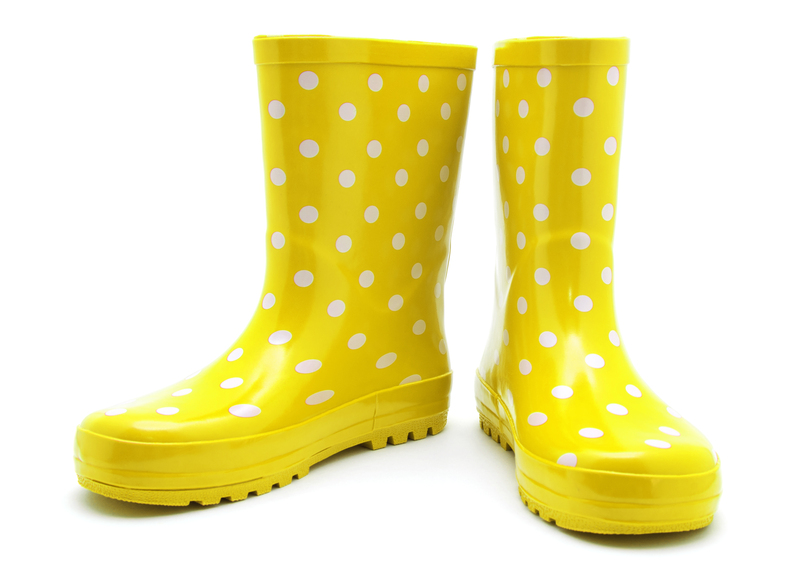Smart strategies for decluttering before you move into a new home
Posted on 09/06/2025
Smart Strategies for Decluttering Before You Move Into a New Home
Moving into a new home is always an exciting journey, but it can also feel overwhelming. One of the most important steps to ensuring a smooth move is decluttering before you move. When you take the time to organize and rid your household of unnecessary items, you set yourself up for a fresh start in your new space. This comprehensive guide outlines smart, efficient, and actionable decluttering tips that will help you embark on your relocation with a lighter load and a clearer mind.

Why Decluttering Before a Move is Essential
Before we dive into smart strategies, let's explore why decluttering prior to moving homes is critical. A well-decluttered home not only makes packing easier but also saves you money on moving expenses, reduces stress, and helps you create a harmonious environment in your new dwelling. The process allows you to evaluate what truly matters and to cherish your possessions in a more intentional way.
- Save on Moving Costs: The fewer items you move, the less you'll spend on movers, boxes, and transportation.
- Streamline Packing and Unpacking: With less to handle, both packing up your old home and settling into your new home become much more efficient and enjoyable.
- Fresh Start: Leaving clutter behind gives you the opportunity for a new, organized beginning in your new space.
When Should You Start Decluttering?
A commonly asked question is "How early should I begin decluttering before a move?" Ideally, start at least one to three months before your moving date. This timeline provides enough space to go through each area methodically, ensuring you make intentional decisions rather than rushed choices.
Breaking down the process into manageable phases (such as weekly goals or tackling one room at a time) helps prevent overwhelm and keeps you on track.
Effective Decluttering Strategies Before Moving
To be efficient, you'll want to employ smart decluttering strategies before moving into your new home. The following methods combine organization wisdom, practical tips, and emotional intelligence for the best results.
1. Create a Master Decluttering Plan
Set yourself up for success by drawing up a plan. List out every room or area that needs to be sorted: bedrooms, kitchen, closets, garage, attic, and even storage spaces. Assign deadlines to each section to stay motivated and focused.
- Tip: Use a printable checklist or digital spreadsheet to track your progress.
2. Categorize Your Belongings
Go through each space and separate items into four main categories: keep, donate, sell, and discard. Sorting by category simplifies decisions and ensures nothing is overlooked.
- Keep: Items you use regularly or that truly bring you joy.
- Donate: Gently used goods that others might need.
- Sell: Valuable items you no longer need that could fetch some extra cash.
- Discard: Broken or unusable items ready for the trash or recycling bin.
3. Apply the "One-Year Rule"
A useful guideline is to ask yourself, "Have I used this item in the past year?" If not, it's probably safe to let it go. This rule is particularly efficient when it comes to clothing, kitchen gadgets, and hobby materials.
4. Tackle One Room at a Time
Staying organized is easier when you focus on decluttering one space before moving onto the next. Begin with less emotional areas (like the bathroom or pantry) to build momentum before tackling sentimental spaces such as bedrooms or living rooms.
- Tip: Label boxes or bags with their destination--keep, donate, sell, discard--as you go for maximum efficiency.
5. Don't Forget Hidden Spaces
It's easy to overlook out-of-sight storage. Be sure to check inside drawers, under beds, in cupboards, attic spaces, the garage, basement, and behind doors. Decluttering these "invisible" areas can make a significant difference.
6. Digitize Important Documents
Physical paperwork can take up a surprising amount of space. Scan or photograph vital documents such as warranties, receipts, medical records, and personal paperwork. Store digital copies securely on a cloud service or a backup drive, then safely shred and dispose of the originals you no longer need.
7. Streamline Electronics and Cords
Gather all electronic devices, cords, and chargers. Test them, keep what you actually use, and responsibly recycle the rest. Electronics recycling programs are available in most communities.
8. Use the "Four-Box Method"
For each room, bring four large boxes or bins labeled Keep, Sell, Donate, and Toss. Pick up each item only once and make a decision. This method minimizes backtracking and ensures quick progress.
9. Host a Pre-Move Garage Sale
Selling unwanted items via a garage sale, online marketplaces, or community apps can help you earn money that offsets moving costs. Plus, it ensures your gently-used items find new homes rather than ending up in a landfill.
- List items on platforms like: Facebook Marketplace, Craigslist, or neighborhood groups.
- Advertise locally and set reasonable prices for quick sales.
10. Schedule Donation Pick-Ups
Many charities offer free donation pick-up services for large quantities or bulky items. Schedule a pickup ahead of your move to ensure your donated goods go to those in need.
Popular donation centers include:
Goodwill, Salvation Army, Habitat for Humanity, and local shelters.
11. Dispose Responsibly
For hazardous materials (paint, chemicals) or electronics, check with your town or city for proper disposal protocols. Don't leave behind items that require special handling.
- Recycle whenever possible and never dispose of hazardous waste with regular household trash.
Room-by-Room Decluttering Checklist
A room-focused checklist ensures nothing gets overlooked when preparing for your upcoming move. Here's a detailed breakdown:
Kitchen
- Expired/non-perishable foods
- Duplicate utensils or broken gadgets
- Unused cookbooks or specialty appliances
- Old Tupperware without lids
Bedroom
- Outgrown or ill-fitting clothes and shoes
- Old linens, bedding, and pillows
- Unworn accessories or costume jewelry
Bathroom
- Expired medication and toiletries
- Old makeup and skincare products
- Worn towels and washcloths
Living Room
- Books you no longer read
- Outdated decor or picture frames
- DVDs, VHS tapes, CDs (digitize collections where possible)
Home Office
- Old paperwork, magazines, or junk mail
- Unused stationery supplies
- Broken or redundant tech devices
Garage/Storage Areas
- Unused tools, gardening supplies
- Old paint or hazardous chemicals
- Seasonal decorations not used in years
Emotional Tips for Decluttering Before Moving
Letting go can be tough, especially with sentimental belongings. Here's how to stay strong:
- Take photos of sentimental items for memory's sake before letting them go.
- Enlist help from a friend or family member for emotional support and perspective.
- Remember that the memory isn't in the object itself.
- Set aside only a small box for keepsakes you can't part with.
How to Make Decluttering a Family Project
Enlist the whole household! Make decluttering fun by turning it into a family challenge. Assign small tasks to kids, create a "donate box" together, and celebrate each milestone. Involving everyone ensures the process is faster, easier, and more rewarding.
Decluttering and Packing: Should You Do Both Together?
Many homeowners wonder if they should declutter as they pack or handle each task separately. The best approach is often a hybrid: sort and make decisions as you pack, but prioritize decluttering a few weeks before you start putting things in boxes. This dual approach helps ensure you're not moving unnecessary items and keeps stress levels low.
- Pack by room and only after decluttering.
- Label items clearly to avoid confusion and hassle on moving day.
- Don't pack anything you don't want in your new home!
Final Moving Day Declutter Tips
As your moving day approaches, do a final walk-through of your home. Check every cupboard, closet, and storage nook to make sure nothing is left behind. Double-check your "keep" pile--sometimes seeing items again after a little time has passed helps you make even more objective decisions.
It's a great idea to have an essentials box with things you'll need for your first night at your new residence, so you're not digging through boxes right away.

Benefits of Moving Into Your New Home Clutter-Free
- Easier unpacking: Only the essentials and favorites make the journey to your new residence.
- Less stress: Arriving with just what you need creates an atmosphere of calm from day one.
- A fresh start: Begin a new chapter in a serene, organized space.
- Save time and money: Fewer items to move means reduced costs and faster setup.
Conclusion: Your Stress-Free Move Starts with Smart Decluttering
Decluttering before you move into a new home isn't just about clearing away old possessions--it's a process that will set the stage for your best possible start in a new place. By following these smart decluttering tips before moving, you can make room for what matters most and enjoy a seamless, energized transition. Take it one step at a time, get the family involved, and embrace the opportunity for a clutter-free lifestyle as you settle into your new home.
Happy moving!





